
Standing at the edge of Fair Lane Lake, there are wood ducks, great blue herons and a black-crowned night heron — all on a recent weekday lunch walk.
Standing at the edge of Fair Lane Lake, there are wood ducks, great blue herons and a black-crowned night heron — all on a recent weekday lunch walk.
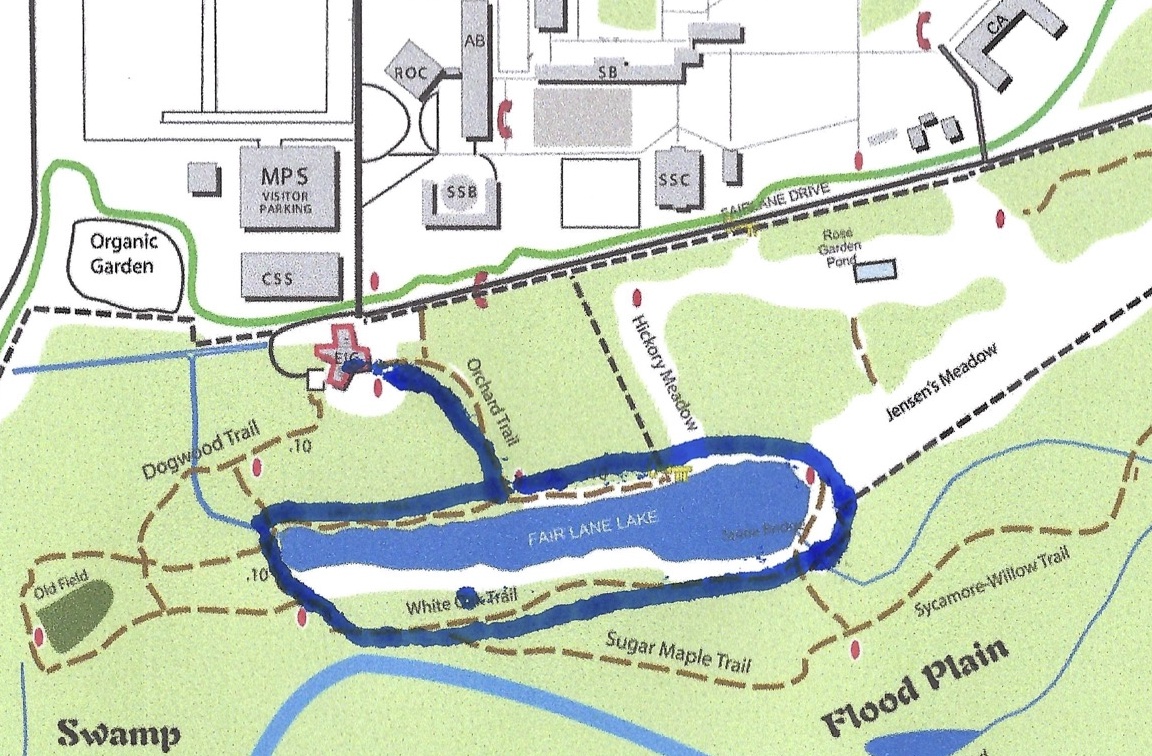
“We’ve seen osprey, eagles, kingfishers and other birds on or over this lake. More than 100 years after it was put here, this lake continues to serve its purpose,” says Environmental Interpretive Center Program Supervisor Rick Simek, while pointing out the many waterfowl — including a wood duck family — seen on the lake. “The lake was created in 1915 as a conservation effort. By the early 1900s, some waterfowl species were in decline. That included the wood duck, which was rapidly declining and thought to be headed toward extinction. This lake was intended to provide a refuge for wood ducks and other waterfowl."
For the last installment of Reporter’s summer trail series, Simek highlights a few interesting sights, sounds and facts around and about Fair Lane Lake.
This walk, which takes about 45 minutes depending on your pace, starts at the EIC. Then head down Orchard Trail, turn left at the lake and follow it around until you are back at Orchard Trail. Trail tip: wear bug spray, especially on a wet, humid day.
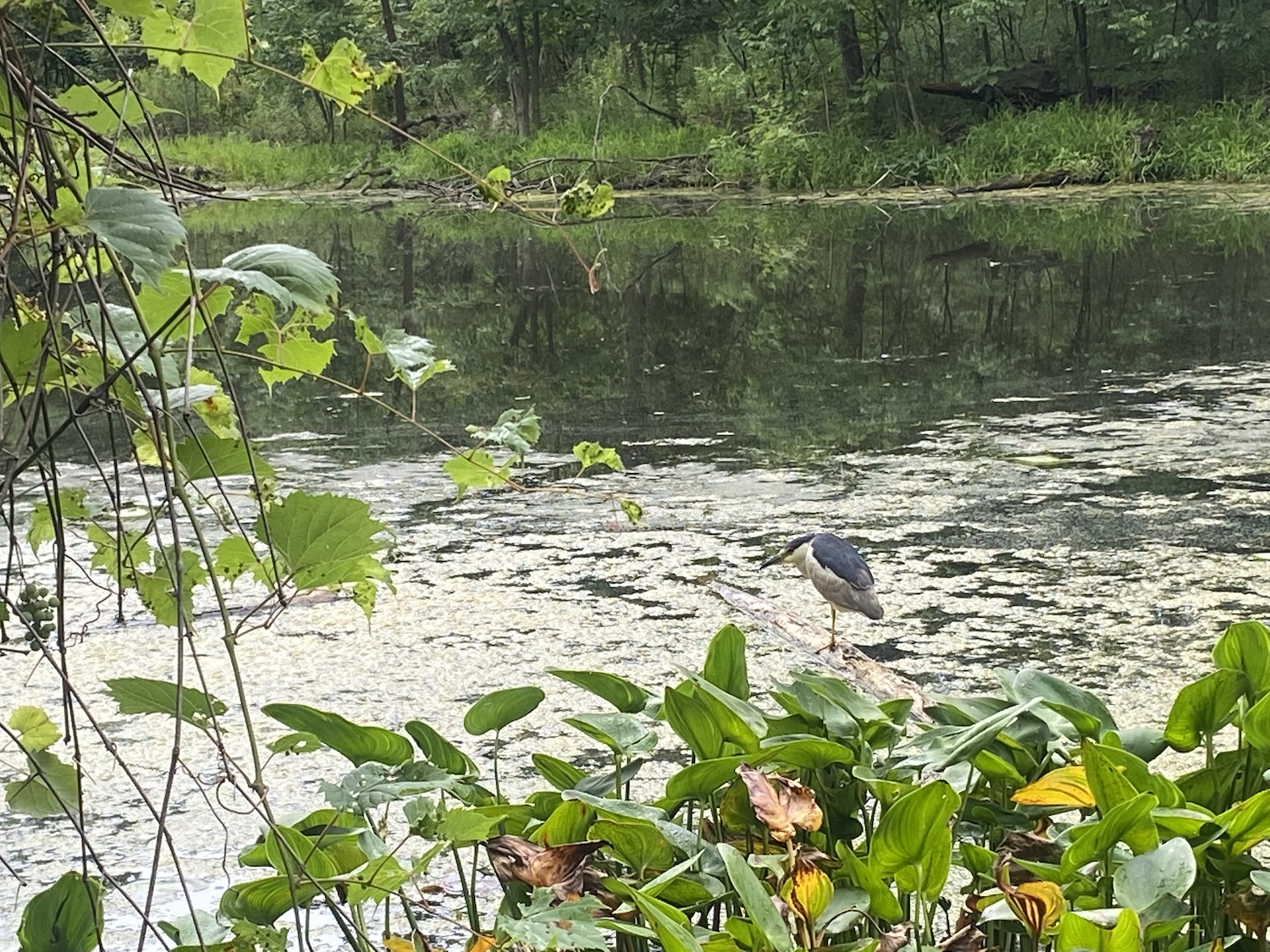
As Simek shared above, the lake was created with birds in mind. “Henry Ford was a very complicated man, to put it mildly. But he was instrumental in protecting bird life and promoting conservation efforts,” Simek says. “The reason we have so many birds here today — and birds that are doing very well — is because of him.”
In 1915, Ford commissioned a 10-acre lake — which is now closer to eight acres as dirt from the 1959 campus construction was poured in the lake — that was on a gradual slope that went from 12 feet on the south end (by the Ford estate) and became more shallow as it moved north (the side closest to Henry Ford College).
At the shallow end, wild rice was planted to provide food and habitat for marsh birds. Native plantings and waterfowl food favorites like the arrowhead plants, including the still-visible duck potato, and sweet-scented water lily were planted along the lake. And fish were plentiful and could winter at the deep end of the lake. “There is no evidence that Henry Ford fished at the lake, so the fish may have been put in to provide food for waterfowl such as diving ducks, which often feed on fish,” Simek says.
With the trees, foliage and other natural debris that’s settled at the bottom of water, the maximum depth has changed over the course of a century. According to a research project conducted by 2014 environmental science graduate Ryan Keeling, who took more than 100 measurements across the pond to create a 3D image, the maximum depth is seven feet. Keeling now works at Mast Reforestation in Seattle as a senior manager of GIS technical operations.
“The lake is aging,” Simek says. “But the fish are doing well and the lake continues to provide food and refuge for the plants and animals that live here.”
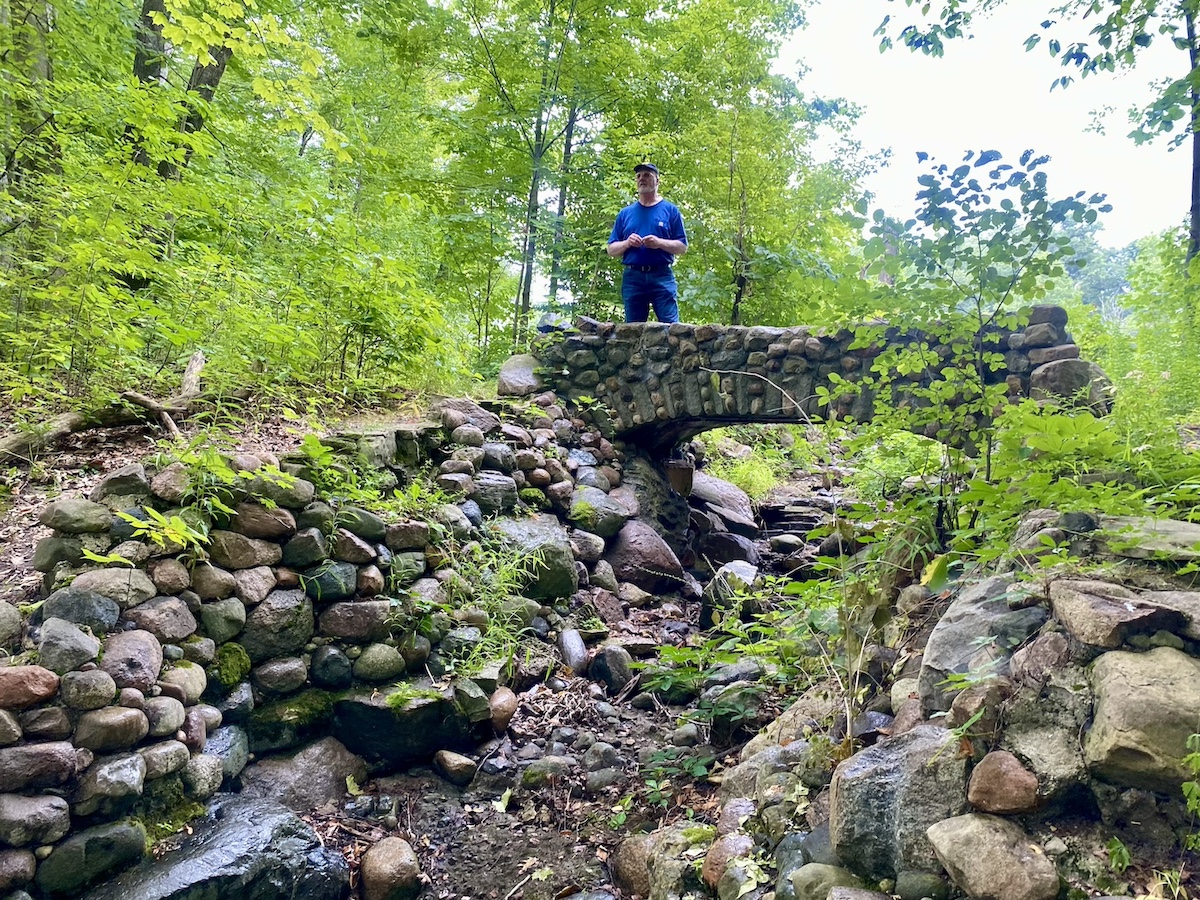
Looking straight out of a storybook, there’s a stone bridge on the walk along the lake. But its origins are a bit of a mystery. Simek says he’s been looking into it for years, but the Fords didn’t include it among their archival blueprints or any other documentation. Simek’s best guess is that it was built around 1915, shortly after the lake was made.
What he does know is that it is a beautiful way for the lake overflow to drain into the Rouge River. “It’s a great meditative place, especially after a heavy rain or when the snow is melting. I come out here often,” Simek says. “The water flows down like a small waterfall.”
Continuing down the path right past the bridge, there are stone steps along the lake. These were built so the Fords could easily go onto the ice to skate. For summer activities, there is a small metal ring along the steps; it's where the Fords may have kept a small boat, Simek says.
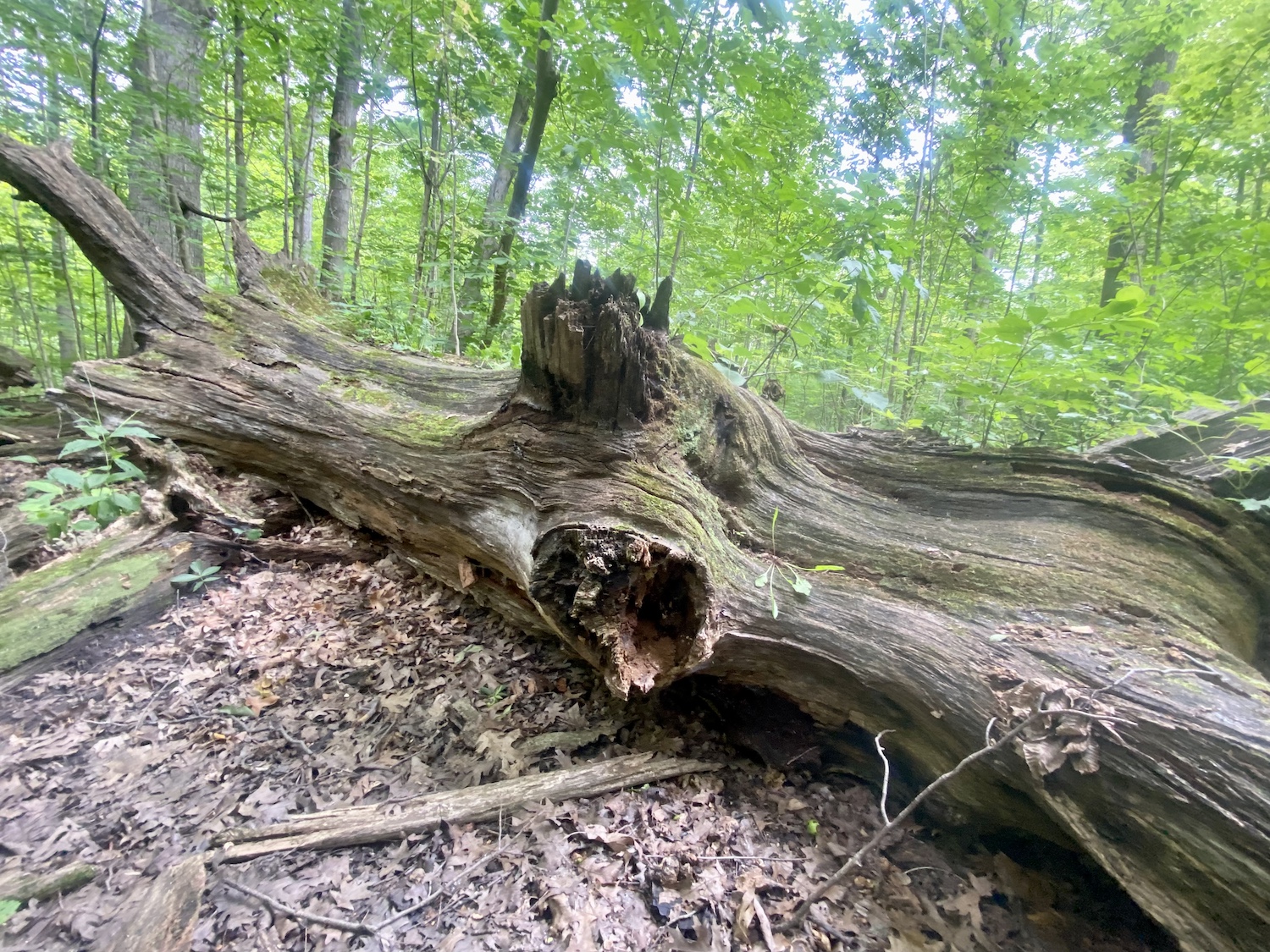
After you walk through an open chain-link gate, there’s a sign with a QR code for the EIC’s website on the right. The sign reads, “The Hidden Benefits of Trees: An Exploration of Medicinal and Other Uses from First Nations to Today.”
Matching up each number-marked tree to the website, fun facts are shared about eight different tree species on the trail. For example, boiled husks from the nuts of the black walnut tree were used to make yellow dye for fabrics. And the inner bark of the black cherry tree was made into a tea that alleviated symptoms of colds, fevers and labor pain by First Nations peoples like the Chippewa and Potawatomi. Simek says ‘2007 biological sciences alum Greg Norwood, who is now an ecologist at the Michigan Department of Natural Resources, developed the tree trail guide as an undergraduate. The current guide is an updated version of Norwood’sl project.
Just past the last tree on the trail, look to the left. There’s a huge white oak on the forest floor. Simek calls it the “fallen giant” and says it was more than 300 years old when it died around 2000. The age estimation of the tree was made in the late 1970s by tree expert Paul Thompson — a statewide big tree coordinator for the Michigan Botanical Club, a role he had for 40-plus years — who worked with Biology and Environmental Studies Professor Emeritus Orin Gelderloos.
Simek, who started at UM-Dearborn in 1994, remembers when the tree still stood. “It has endured for more than three centuries — that’s nearly 100 years before we were a country. It’s this very real link to the past,” he says. “I like to think about the people and wildlife who found shade or shelter under the tree. They may no longer be here, but we will have this connection to them, thanks to this old tree.” Simek says he is sad to see the white oak slowly break down, but it also makes room for new life — including a small oak tree, which is in a cage to protect it from hungry deer, right near it. “It gives you the perspective of not just looking back, but also looking forward,” he says. “I hope this habitat stays preserved so this little oak can live 300 years too.”
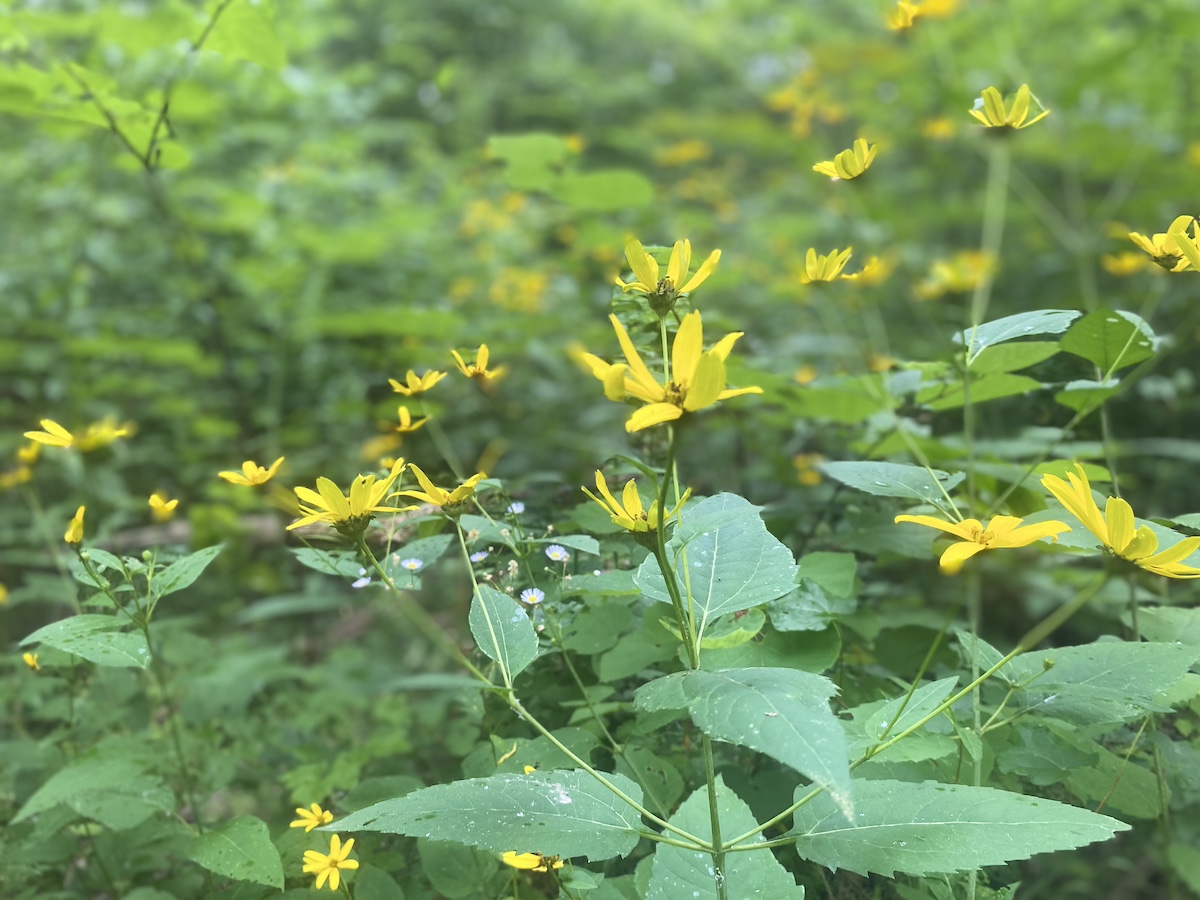
Turning the bend of the lake, there are tall yellow flowers on either side. Simek says they are ox-eye “false sunflowers,” a native wildflower. But these pretty petals didn’t just show up — it was a several-year effort of Simek and EIC volunteers. “As we’ve been removing invasive plants, we've been scattering ox-eye seeds. Birds like the seeds, pollinators like the flowers and I really enjoy seeing a nice pop of color,” he says.
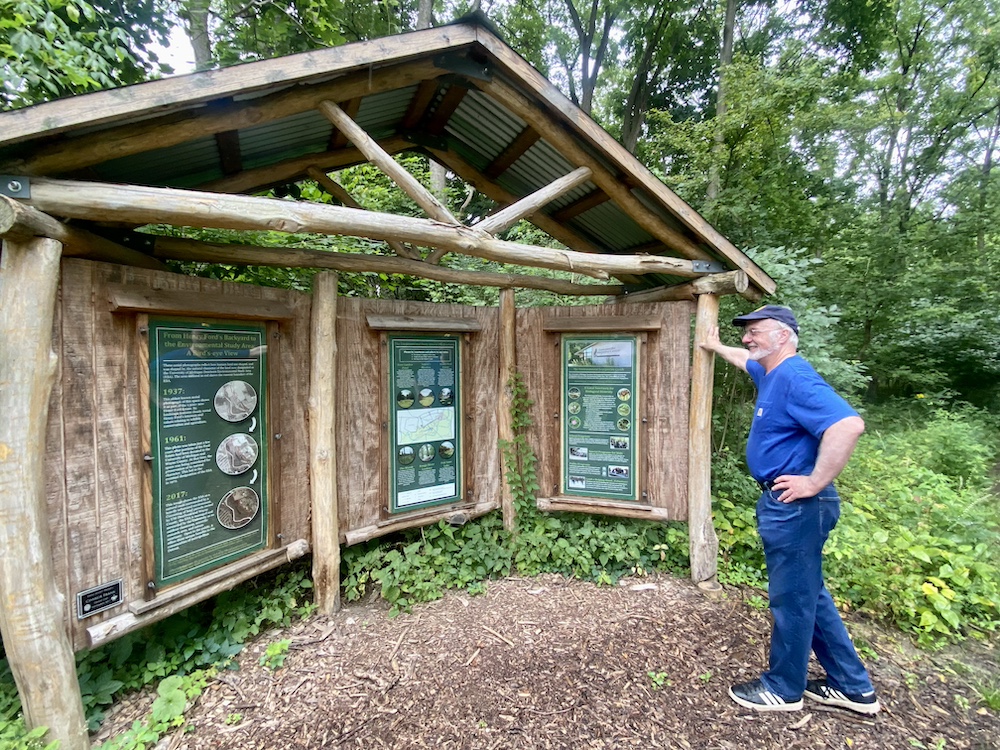
Community volunteers also are responsible for the cages around the small trees along the path to protect the growing saplings from hungry deer, the wooden walkways over the marshy areas along the path and the large EIC welcome sign at the mouth of the trail.
“With preserving this area, the university has given people, myself included, direct access to hands-on personal experience with nature. It is truly one-of-a-kind and the community appreciates what we have to offer,” Simek says. “We’ve had at least 40 Eagle Scout projects done here and I took a call from someone interested in doing one today. Nonprofits, schools, individuals and businesses come out to be wonderful stewards who make sure we keep this outdoor classroom and habitat in a condition that benefits everyone.”
Reporter checked out the south side of the Rouge Gateway trail in July, the north side of the trail in June and the EIC’s Orchard Trail in May. Have a favorite spot on campus and want to know a little more about it? Reach out and we’ll do a little digging.
Story by Sarah Tuxbury.